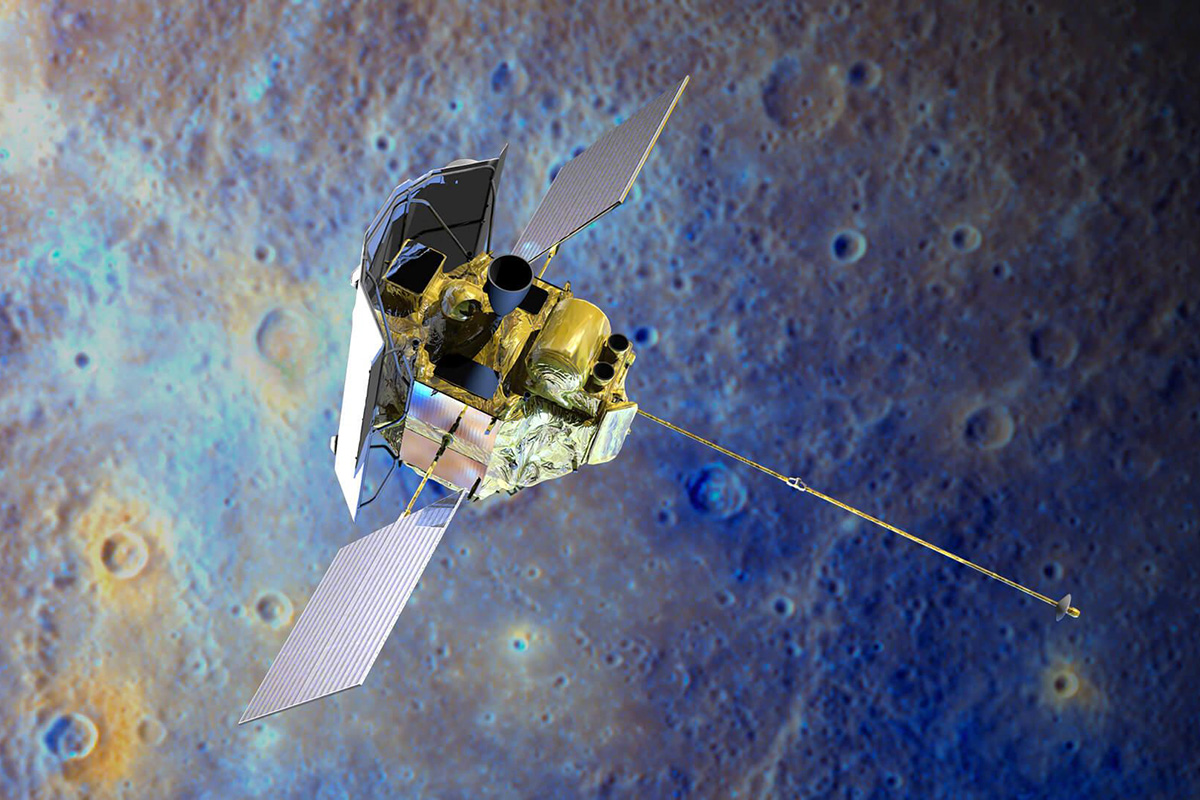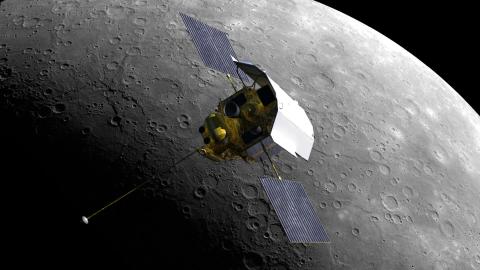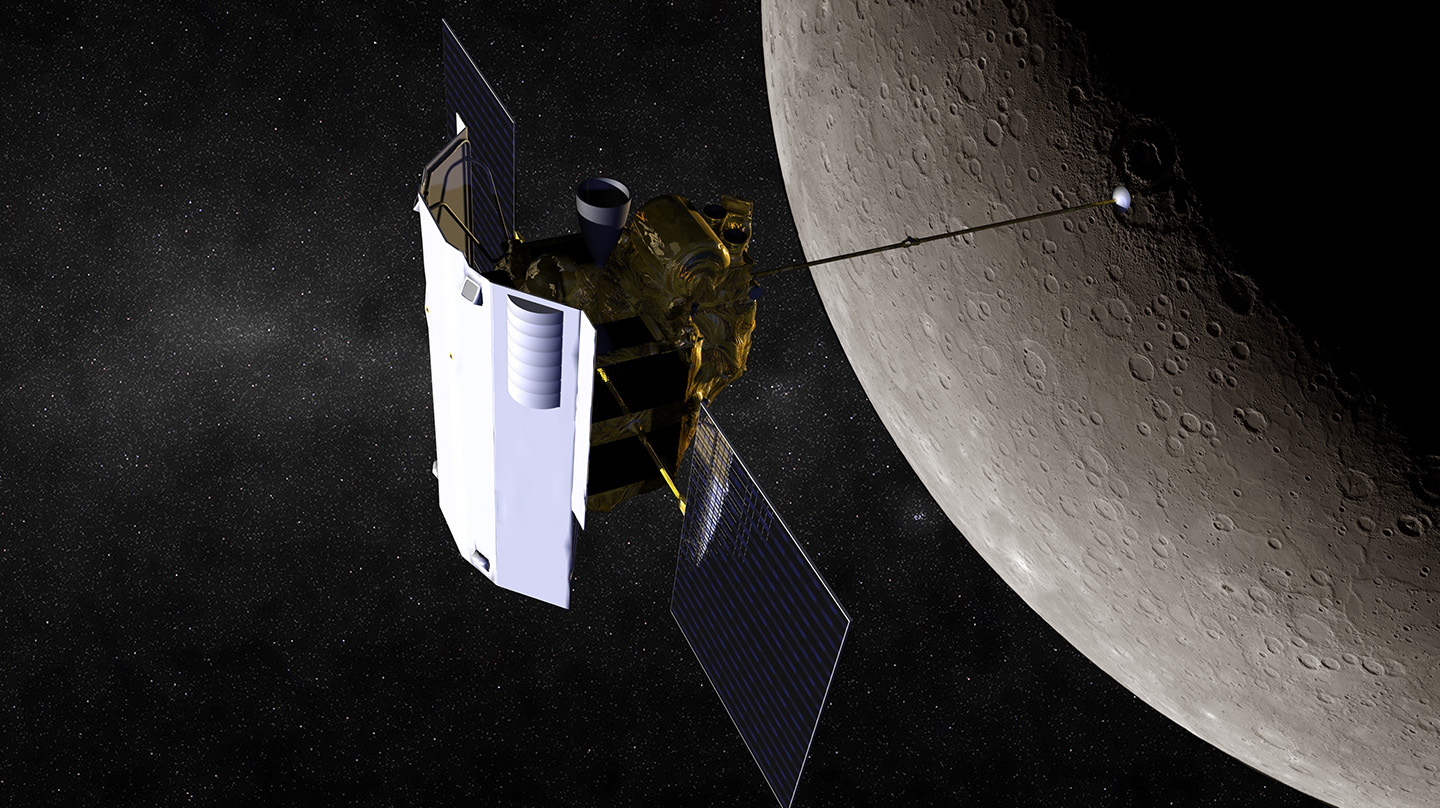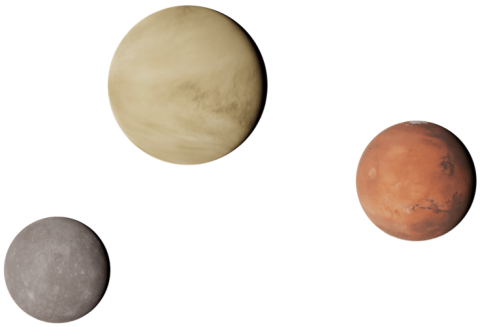Understanding Mercury and how it formed is critical to better understanding the conditions on and evolution of the inner planets. Fortified against the searing conditions near the Sun, MESSENGER (MErcury Surface, Space ENvironment, GEochemistry, and Ranging) provided the first images of the entire planet. The mission also collected detailed information on the composition and structure of Mercury’s crust, its geologic history, the nature of its thin atmosphere and active magnetosphere, and the makeup of its core and polar materials.
Embarking on a 4.9-billion mile (7.9-billion kilometer) journey that included 15 loops around the Sun, MESSENGER’s trajectory included flybys of Earth, Venus, and Mercury itself before easing into orbit around its target planet. The Earth and Venus flybys used the pull of the planets’ gravity to guide solar-powered MESSENGER toward Mercury’s orbit. The three Mercury flybys were used to fine-tune and slow MESSENGER’s track while allowing the spacecraft to gather data critical to planning the mission’s orbit phase, which lasted from 2011-2015.
After more than 10 years in operation, MESSENGER impacted the surface of Mercury on April 30, 2015, marking the end of operations for the hugely successful Mercury orbiter. The data it returned, though, continues to revolutionize our understanding of Mercury and the inner solar system.
Spacecraft and Instruments
Designed and built by APL, the MESSENGER spacecraft tackled the challenges associated with orbiting Mercury. A ceramic-fabric sunshade, heat radiators, and a mission design that limited time over the planet’s hottest regions (while also countering the tug of the Sun) protected MESSENGER without expensive and impractical cooling systems. To fit behind the roughly 8-foot by 6-foot sunshade, MESSENGER’s wiring, electronics, systems, and instruments were packed into a small frame that could fit inside a large sport utility vehicle. Its science payload, which included seven instruments and a radio science experiment, were all designed to operate in the extreme environment near the Sun.
Results and Expectations
Circling the innermost planet from 2011 until a planned impact in 2015, MESSENGER focused on six key Mercury mysteries: density, geologic history, magnetic field, core, key volatiles, and unusual polar materials — which turned out to be water ice on the closest planet to the Sun!
Read more about the top 10 findings from the MESSENGER mission.




